🕒 New Feature: Wiki Changelog
You know that moment when you're reading database documentation and thinking "Is this documentation up to date?" 🤔
We just solved that.
We're excited to announce Wiki Changelog – a collection of features that show schema changes directly in your documentation pages.
Stay in your flow. Know what changed. When it changed. Who changed it.
🕒 Recent Activities & Entity Last Update
Get a quick glance at recent schema updates directly in your wiki pages. See at-a-glance timestamps on each table, field, and schema component so you can instantly assess how current your documentation is without digging deeper.
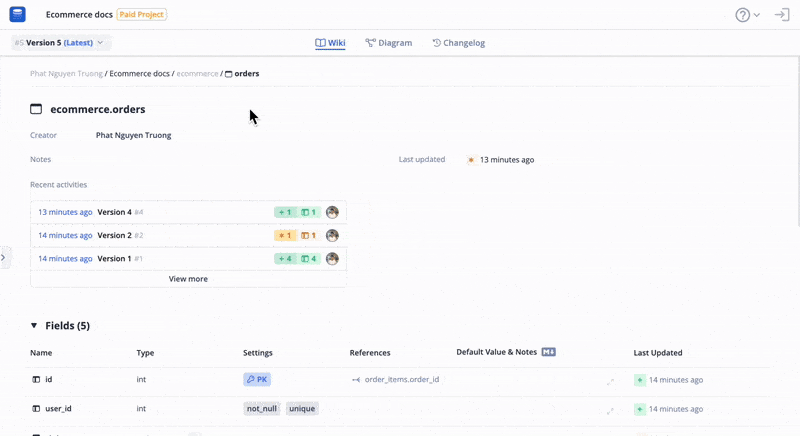
🔄 Entity-Specific Changelog
Drill down into the evolution of individual tables, table groups, or fields. Each entity now has its own changelog so you can track specific changes over time and understand how particular parts of your schema developed.
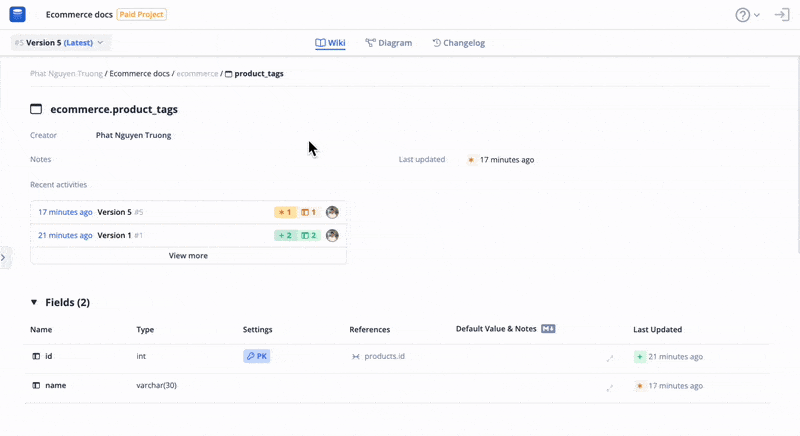
🔍 Wiki Diff View
Compare any two versions without leaving your documentation using Wiki Diff View. From here, you can toggle between familiar documentation style or raw code view.
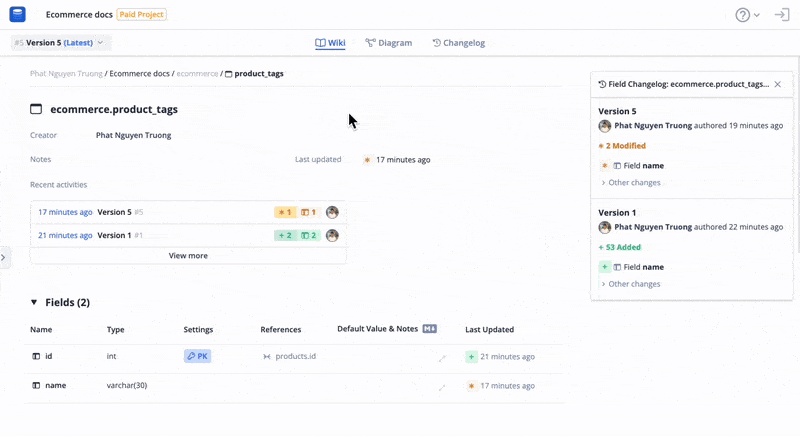
💡 Why You'll Use It
- Debug issues: When something breaks or data looks wrong, quickly see what changed in specific tables or fields recently.
- Share with teams: Point teammates to recent changes during discussions or code reviews.
- Review before changes: Check recent activity on tables or fields before making your own modifications.
- Track compliance: See who made what changes and when for audit trails.
- Plan migrations: Understand change patterns before planning major schema updates.
🚀 Available Now
Wiki Changelog is rolling out to all dbdocs users starting today. Check out the features in action at our live demo: Ecommerce - dbdocs.io or visit any of your existing documentation pages.
If you have any feedback for us, feel free to share it in this community post.
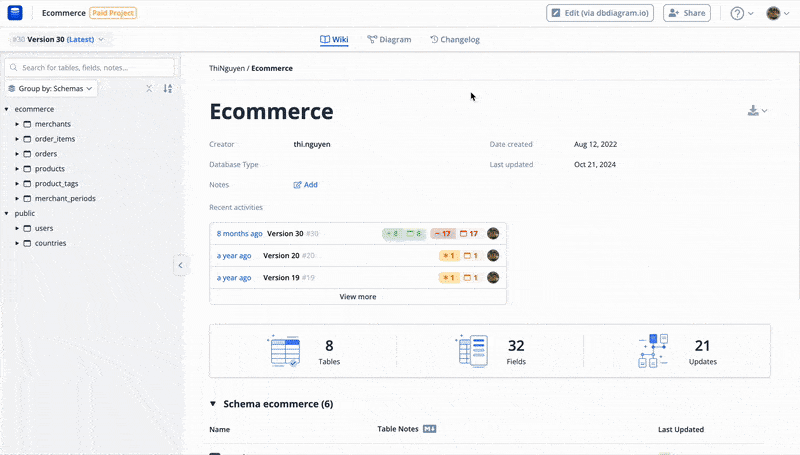

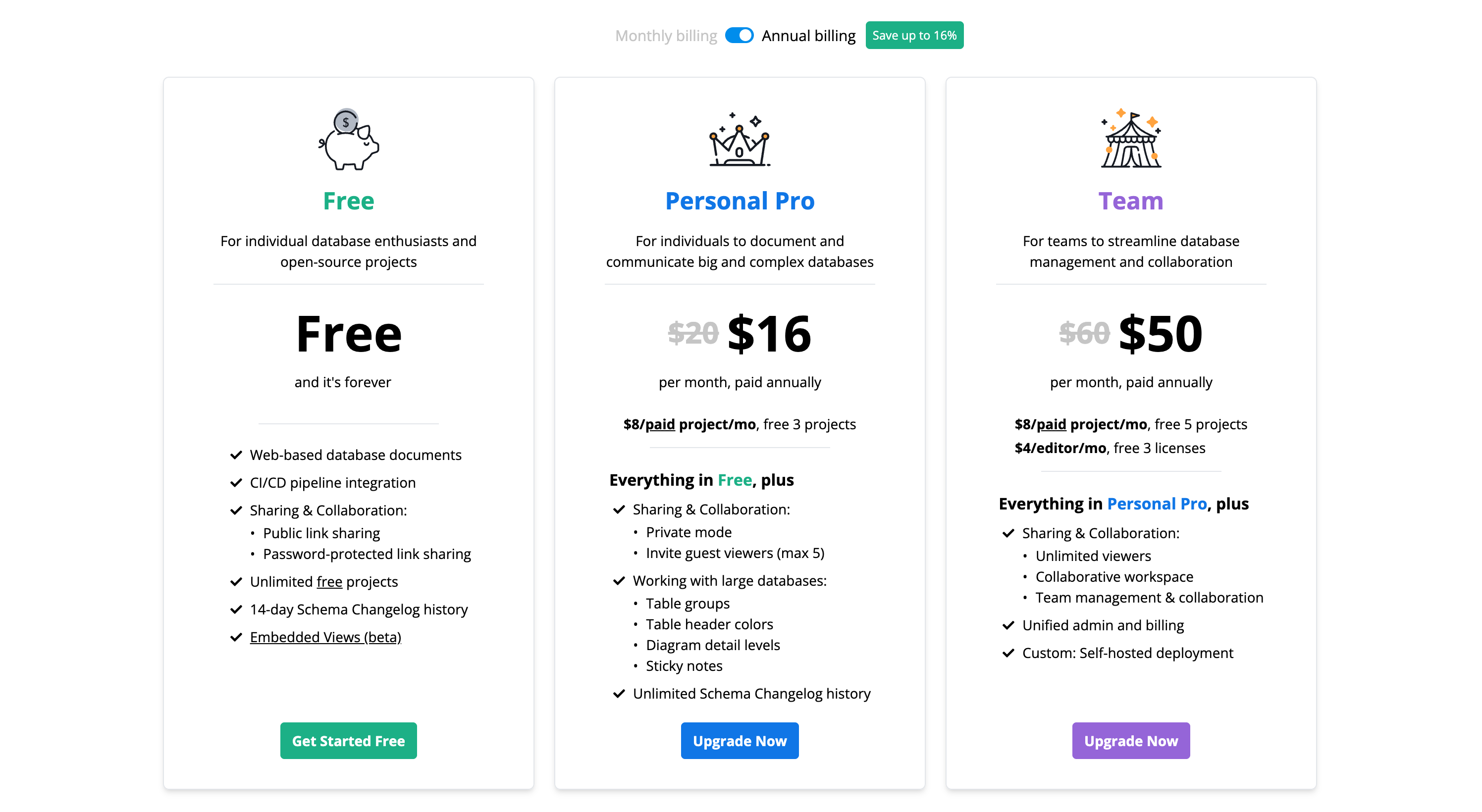
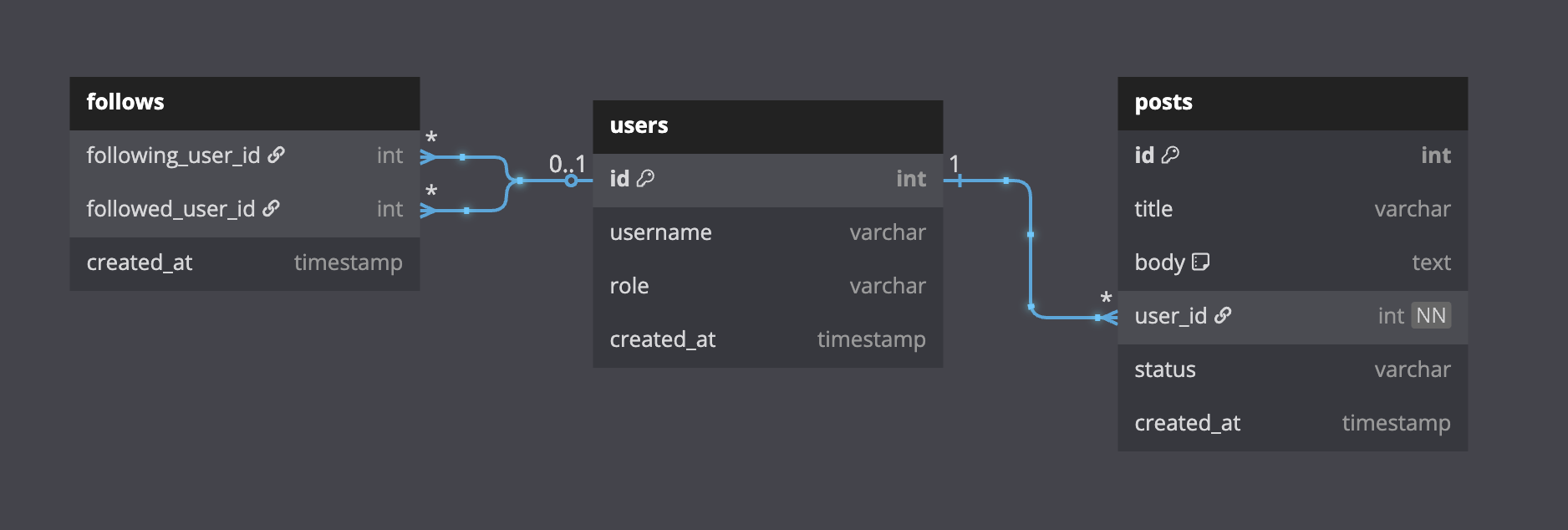
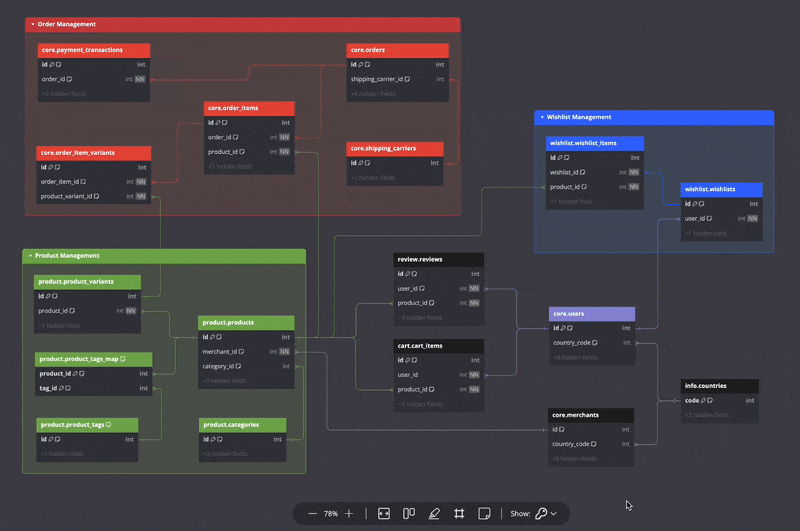


 🎬
🎬